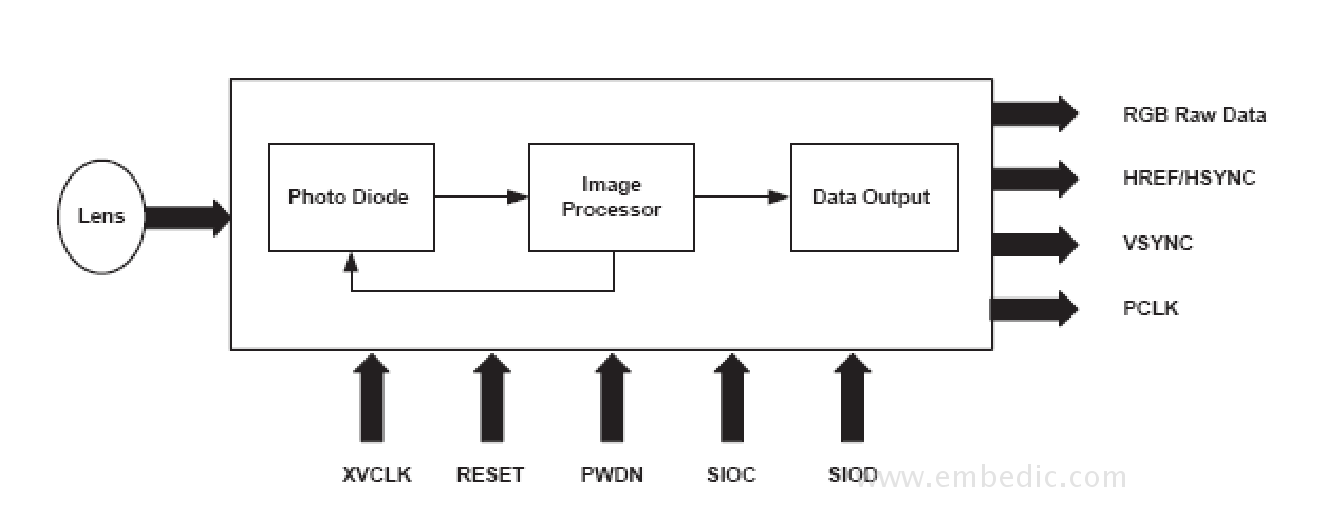The image sensor is a semiconductor chip with hundreds of thousands to millions of photodiodes on its surface. When the photodiode is irradiated by light, it generates electric charge, which is converted into a digital signal by the analog-to-digital converter chip.
The image sensor is a semiconductor chip with hundreds of thousands to millions of photodiodes on its surface. When the photodiode is irradiated by light, it generates electric charge, which is converted into a digital signal by the analog-to-digital converter chip. There are currently two types: one is CCD (Charge Coupled Device); the other is CMOS (Complementary Metal-Oxide Semiconductor).
The image quality produced by CMOS devices is lower than that of CCDs. So far, the vast majority of consumer-grade digital cameras on the market use CCD as a sensor; CMOS is used as a mid-to-low-end product in some cameras. One of the advantages of CMOS image sensors is that the power consumption is lower than that of CCD. In order to provide excellent image quality, the price of CCD is higher power consumption. In order to make charge transfer smoothly and reduce noise, it is necessary to improve the transmission effect by high pressure difference. . However, the CMOS image sensor converts the charge of each pixel into a voltage, amplifies it before reading it, and can be driven by a 3.3V power supply. The power consumption is lower than that of a CCD. Another advantage of CMOS image sensors is that they are highly integrated with peripheral circuits. ADC and signal processors can be integrated together to greatly reduce the size. For example, CMOS image sensors only need one set of power supplies, but CCDs need three or four. Group power supply, because the process of CCD ADC and signal processor is different from CMOS, it is difficult to reduce the size of CCD kit.
The optical image of the scene generated by the lens (Lens) is projected onto the photosensitive surface of the image sensor (Sensor) to convert the light signal into an electrical signal. The internal image processing circuit (ISP) of the chip performs a series of processing on the signal, and finally outputs the digital image signal.

Image Processing Converts the analog signal from the sensor to digital signal, and then performs image correction functions such as automatic exposure, automatic white balance, color correction, and brightness compensation. Then format conversion and output in YUV or RGB format.
Automatic White Balance White Balance is to adjust the image so that the color of the photos taken under various light conditions is exactly the same as the color of the scene seen by the human eye. Simply put, white balance is a function that still defines "white" as "white" regardless of the ambient light.
Automatic Exposure Automatic exposure control is able to automatically adjust the exposure time and amplification gain to adapt to different environmental brightness.
Color Correction Since the sensor's response to different colors of light is different from the human visual system's response to color, the color of the image needs to be corrected accordingly to approach human vision.
Lens Shading Correction (Brightness Correction) Due to the optical characteristics of Lens, the edge area of the Sensor image area receives less light than the center, so it needs to be corrected to make the brightness of the entire image uniform. ‹5. Edge Enhance (Color Reproduction) Due to the color interpolation algorithm (calculating the average value based on the surrounding pixels), the image will appear blurry, so it needs to be corrected to make the image sharper. ‹6. Automatic Flicker Cancellation (Automatic Flicker Cancellation) If the shooting environment uses an AC-powered light source (fluorescent lamp), the brightness of the light source also changes periodically (50/60Hz), when the integration time of the Sensor is not an integer multiple of the flicker frequency of the light source , The image will show light and dark bands. Some sensors have the function of automatically eliminating band noise. ‹7. Bad Pixel Correction (Bad Pixel Correction) There may be spots on the Sensor that do not respond normally to light, such as dead spots and dead spots. The internal DSP of the Sensor will calculate the value of the dead spots based on the surrounding pixels.
IC MCU 8BIT 64KB FLASH 64QFN
IC MCU 32BIT 256KB FLASH 44VTLA
IC MCU 8BIT 768B OTP 28SDIP
IC MCU 32BIT 256KB FLASH 100TQFP
1
2
3
4
5
6